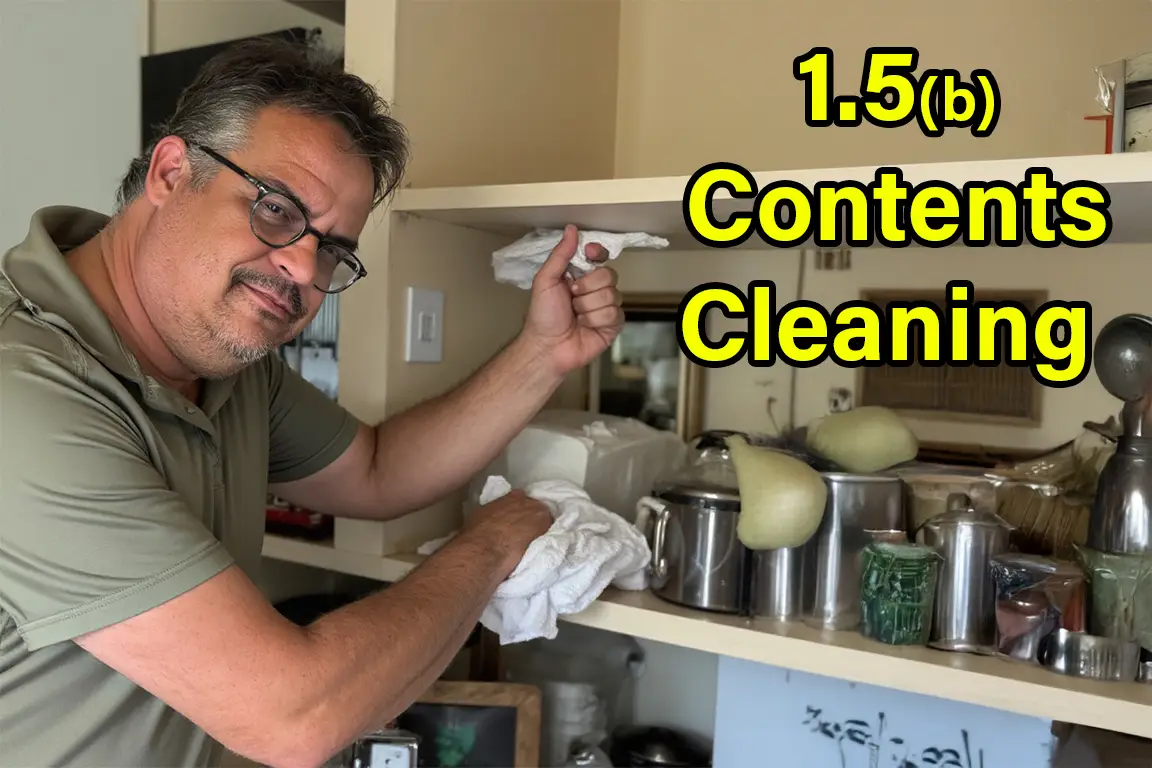Specialty Furnishings, Artwork, and Particle Accumulators
🎹 High-Value Specialty Furnishings
(Pianos, Grandfather Clocks, Antiques, Heirlooms)
Large, intricate, or heirloom pieces often carry both financial and sentimental value, making them difficult to part with. Many are made of semi-porous materials (wood, varnish, leather) and have internal cavities where dust and spores can settle.
General Guidelines:
• No visible mold or water damage? Cleaning may be worth attempting.
• Visible mold, musty odor, or symptom trigger? Professional evaluation is advised.
Pianos
• Exterior: Gently HEPA vacuum and damp wipe (use microfiber, not wet).
• Interior: If accessible, air wash with low-pressure blower outside, or hire a piano restoration specialist for internal cleaning.
• Don’t use liquid cleaners near keys, cords, or hammers.
Grandfather Clocks & Antiques
• HEPA vacuum crevices.
• Air wash carvings or detailed features outside.
• Wipe with barely-damp microfiber and mild botanical cleaner.
• Avoid overwetting veneer or wood with age cracks—these are vulnerable.
Tip: Place cleaned high-value items into clean areas only after your home and health are stabilized. Store temporarily if needed.
🖼️ Hanging Portraits, Photos & Artwork
These items are often semi-porous (paper, canvas, untreated wood, fabric) and difficult to decontaminate without damaging the surface.
Cleaning Options:
• Glass-covered photos: Remove from the wall, HEPA vacuum frame edges, then damp wipe the frame and glass.
• Frameless prints or canvas: Use air washing only, outdoors. If particles persist or reactions occur, consider discarding or digitizing.
• Unsealed or fabric-based artwork: Not generally cleanable—store in a sealed bin or have professionally evaluated.
Preservation Tip: Photograph sentimental artwork and store originals in archival sleeves or bins with silica gel until a long-term decision is made.
🌀 Accumulators – Vacuums, Air Purifiers, HVAC Registers
These devices are designed to move or trap air—and in the process, they accumulate a high particle load over time. They’re often overlooked sources of recontamination if not addressed.
Vacuums
• Only keep vacuums with sealed HEPA systems.
• Discard bagless vacuums or any unit used during visible mold contamination.
• Wipe outer casing, and if saving, replace all filters and internal dust containers.
Do I have to get rid of my Expensive Portable Air Purifiers?
Short Answer:
Not necessarily—but they may need a deep cleaning, a filter replacement, or in some cases, an upgrade.
Explanation:
If your remediation was successful and the environment is now clean and stable, your air purifiers can still be useful. However, the units you used before or during remediation may have collected mold spores, fine particles, or VOCs, especially if they ran continuously during a contaminated period.
1. Check the Filters:
Replace all HEPA and carbon filters, even if they aren’t “due” yet. Mold spores and VOCs can linger in used filters and reintroduce contaminants.
2. Clean the Units:
Wipe down the outer housing and, if possible, clean the internal components per manufacturer instructions. This helps remove any buildup of fine particles or mold residue.
3. Re-evaluate the Model:
Some older units don’t meet modern standards for Clean Air Delivery Rate (CADR) or filtration efficiency. If the space or health concerns have changed, it might be time to upgrade to a unit with higher airflow (CADR), better HEPA performance, or added VOC filtration.
Window AC Units & Fan Registers
• If registers are removable, wash in soapy water and dry thoroughly.
• For window units or portable fans, clean grilles with HEPA vacuum + botanical wipe-down.
• Consider replacing if there’s visible mold or persistent odor.
💡 Pro tip: Clean air purifiers and vacuums last in your cleaning order to avoid redistributing particles into newly cleaned areas.
Bottom Line:
Keep the units if they still work well, but give them a fresh start with new filters and a proper cleaning. If you feel like you have a sensitivity reaction when running then, it might be better to replace them. It’s always better to be safe than sorry.

